STFC scientists, engineers, technicians and programme managers are involved with making them a reality. Together with the UK Astronomy Technology Centre (UK ATC), we've taken a look at some of them below.
William Herschel Telescope Enhanced Area Velocity Explorer (WEAVE)
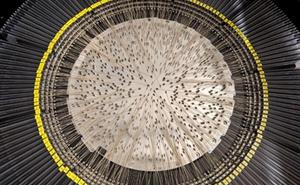
A fully-configured WEAVE field, with 700 of around 950 fibres placed by two robots (out of frame), on location in the WHT. Credit: Gavin Dalton/U. Oxford and STFC RAL Space.
WEAVE is a facility upgrade for the 4.2m William Herschel Telescope (WHT) at the Observatorio del Roque de los Muchachos on the Island of La Palma. WEAVE will collect more than 12 million spectra of stars and galaxies providing critical data to enhance the science return from Gaia, the European Space Agency’s Milky Way mapper. WEAVE will enable the mapping of the dark matter distribution in the Milky Way and also allow studies of the formation and evolution of galaxies across cosmic time, and the interactions between the stellar content of galaxies and their central black holes. The WHT forms part of the Isaac Newton Group, which is operated by STFC on behalf of the UK, the Netherlands, and Spain and the WEAVE international consortium was led by RAL Space.
Multi-Object Optical and Near-infrared Spectograph (MOONS)
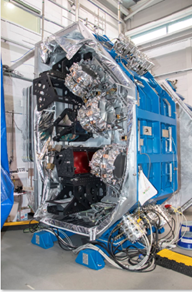
Moons at the UK ATC. Credit: UK ATC / Jason Cowan
MOONS is a new visible and near-infrared multi-object spectrograph in construction for the Very Large Telescope (VLT) in Chile. MOONS will provide observations of 1000 objects simultaneously using robotic positioners to select individual targets. It will be the first time this has been done on an 8m telescope at infrared wavelengths, providing a unique and remarkable capability for studies of galaxy formation and evolution. It also includes a high spectral resolution mode in the infrared to allow detailed study of stellar chemistry in the enigmatic populations of stars in the highly obscured, inner Milky Way. The project is being managed and led by the UK Astronomy Technology Centre (UK ATC).
World Space Observatory-Ultraviolet (WSO-UV)
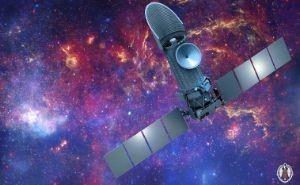
Artist's impression of WSO-UV. Credit: Roscosmos
Like instruments on-board the Hubble Space Telescope, the World Space Observatory will detect ultraviolet (UV) light. The WSO-UV is currently the largest UV telescope planned for operation between 2025 and 2035 and will help scientists explore the nature of the early universe and aid the understanding of the formation and evolution of stars and galaxies, including our Sun and Milky Way. UV light is largely absorbed by the atmosphere and so we have to put instruments in space in order to observe it efficiently. There are currently only a few UV instruments still operational on ageing missions including Hubble, and with huge demand from astronomers, the WSO-UV will create more opportunities to observe the universe from a much higher Earth orbit. This Russian mission is currently scheduled for launch in the mid-2020s. RAL Space have provided four sets of CCD camera control electronics which will set at the heart of the instruments on board.
Extremely Large Telescope (ELT)
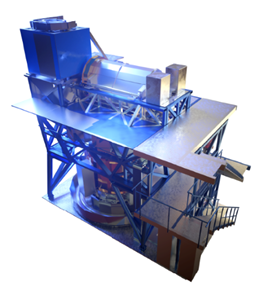
Artists impression of HARMONI for the ELT. Credit: ESO
The ELT is now under construction in northern Chile by the European Southern Observatory (ESO). With a diameter of 39m and a collecting area larger than all current large telescopes combined, its sensitivity and spatial resolution will dwarf that of existing facilities at visible and infrared wavelengths. The ELT will address a vast range of astrophysics, from searches of bio-markers in nearby exoplanets to detection of the most distant galaxies at the edge of the observable Universe. Technical first light is planned for 2027.
The UK ATC is the lead technical institute in development of the first-light HARMONI spectrograph (led by University of Oxford, and also involving RAL Space). HARMONI is an integral-field spectrograph, meaning that it provides us with infrared and visible spectra of all of the sources in a given patch of the sky. When coupled with a powerful adaptive optics system, it will provide us with spectra at unparalleled sensitivity and angular resolution. The UK ATC also manages the UK ELT Programme, which supports the UK leadership of HARMONI and smaller roles in some of the future instruments (METIS, MOSAIC, HIRES).
The Square Kilometre Array Observatory (SKAO)
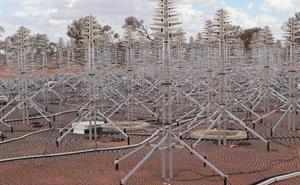
SKAO Low antennas at the Murchison Radio-astronomy Observatory in Australia. Credit: STFC RAL Space/ Chris Pearson
While Webb's 6.5m primary mirror dwarfs Hubble's 2.4m mirror, here on Earth, what we lack in altitude can be made up for with scale. The SKAO project is an international effort to build the world's largest radio telescope, made up of thousands of small radio telescopes spread across two continents, the Karoo region of Southern Africa and Western Australia. Like Webb, the SKAO will be able to look back through time to the earliest universe but will do this using radio waves rather than infrared. This means it will investigate a range of questions about the nature of gravity and of dark energy reaching back to when the very first stars formed by mapping the distribution of hydrogen in the universe.
The UK is one of the leading international partners in development of the SKAO, as well as hosting its global headquarters at Jodrell Bank. Building on heritage from the ALMA observatory, the UKATC is leading development of the astronomer facing software that the observatory will use, and RAL Space is involved in the development of the data processing for the largest 'Big Data' project in the world.
The first phase of the observatory is expected to start observations later this decade.
Atmospheric Remote-sensing Infrared Exoplanet Large-survey (ARIEL)
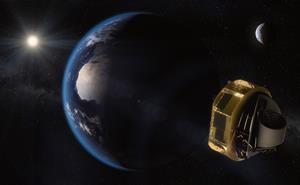
Artist's impression of ARIEL. Credit: ESA/STFC RAL Space/UCL/Europlanet-Science Office
When Hubble launched, we didn't know that exoplanets (planets orbiting other stars) even existed. Hubble was the first space telescope to spot an exoplanet in visible light. This has led to a spree of exoplanet hunting missions. The Ariel mission is just one of the upcoming sophisticated missions solely focused on finding out about planets outside our solar system. Ariel will operate in the infrared to look at warm and hot planets close to their home stars and study the atmospheres of those planets in detail. While we now know that every star probably has at least one planet in orbit, the only planets we know in any detail are the eight around our own Sun. At the moment there could be as many types of planets out there as you can imagine, from lava and ice worlds to planets made entirely of diamond. Ariel and the other exoplanet missions will, over the coming decades, help us find out what else might be out there and how unique the Earth might be. Ariel is an ESA mission scheduled to launch in 2029. RAL Space are the payload consortium project managers for the mission and the STFC Technology department are providing the cooler.
